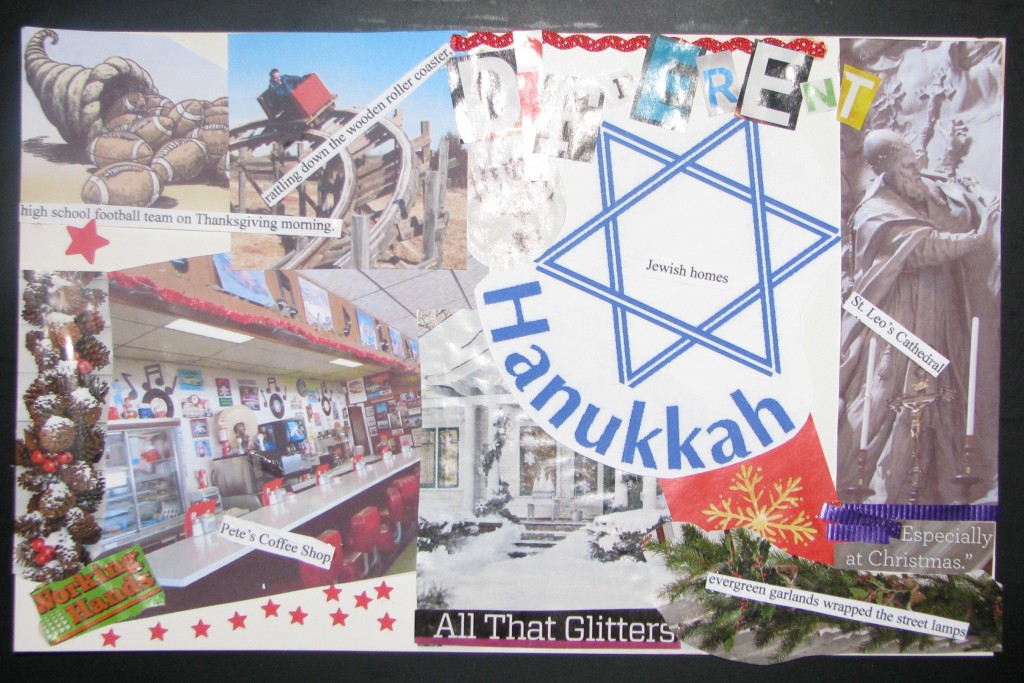Ruthie’s Town
by Marla Deschenes
Response
RUTHIE’S TOWN – a story excerpt
by Lisa L. Leibow
Inspiration
It’s an industrial city, centrally located – an hour from everywhere. On Main Street, a railroad
bridge spanned a steep incline heading north. At least once a week,
a semi misjudged the clearance and jammed underneath it. Traffic
would back up beyond the Searstown Mall as far as St. Leo’s, while
everyone waited for the driver to let enough air out of his tires to
escape the clutches of the trestle. Once loose, the trucker would
re-inflate all eighteen wheels and carry on.
The trucker could have been headed to Pete’s Coffee Shop, where thick-necked guys with rolled-up sleeves,
sat at the counter. They worked at Foster Grant making sunglasses,
Alpha Rho making plastic boxes of all colors and sizes, and Union
Products making pink flamingos. They sat at the counter and
complained about the Bruins in winter and the Red Sox in summer. The
trucker also could have been headed to Whalom Park, home of the Flyer
Comet, where teenaged townies had a whale of a time. They would cling
to their dates and scream, while rattling down the wooden roller
coaster, or sit on the hoods of their parents’ station wagons at
the edge of the lake, passing around joints.
On Sundays, most of the population filled St. Leo’s Cathedral to the rafters. They were Catholics of
Irish, Roman, and French Canadian descent drawn together by the
parish. The rest of the Sunday morning worshipers could be found at
the United Methodist Church over on Hall Street. But Ruthie Kahn
worshipped on Saturdays, with about twenty others over at
Congregation Agudas Achim.
A block or two away from the synagogue was Doyle Field, where religion didn’t matter. All that mattered
was rooting for the high school football team on Thanksgiving
morning. Citizens filled the stands, everyone waving banners and
cheering on the Blue Devils against the Red Raiders. In those days,
few commuted any distance to make a living. Teachers, doctors,
pharmacists, and lawyers were all part of the community where they
worked. They joined students, parents, and factory workers, whistling
and whooping for the blue and white.
During the dark days of winter, evergreen garlands wrapped the street lamps glowing along Main
Street. Anyone driving toward the high school could see skiers riding
up t-bars and slaloming down the lighted slopes of Pheasant Run.
Winding through the residential neighborhoods off of Merriam Avenue
and West Street brought views of trees wrapped in blinking lights.
Flashing Santa Clauses and animated elves decorated yard after yard.
A car might pass a hundred houses blazing in red, green, and white
before reaching a split level lighted only by a post lamp at the edge
of its neatly shoveled walkway. Sometimes the bare homes would run
three or four in a row, but then it would be one-hundred-fifty before
another unadorned house came along. This was the easiest time of year
to pick out Ruthie Kahn’s and the few other Jewish homes in town.
